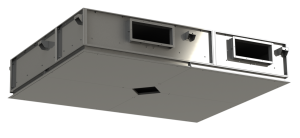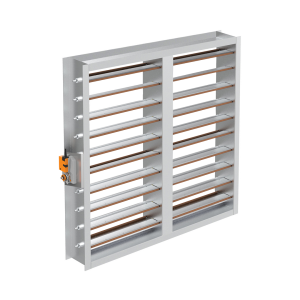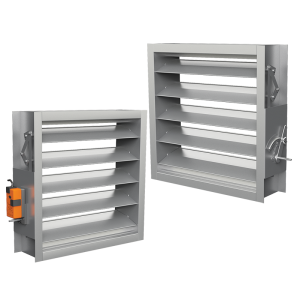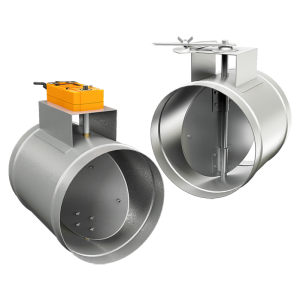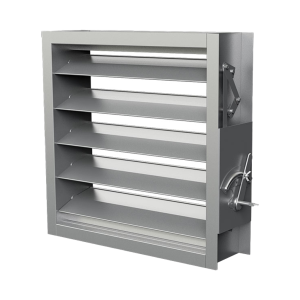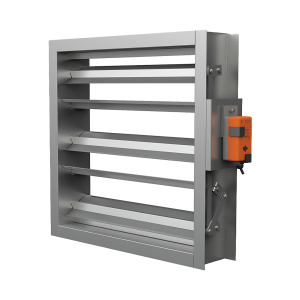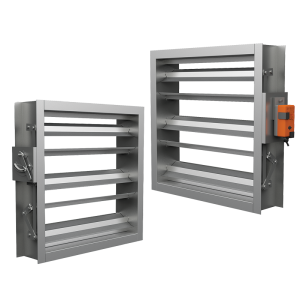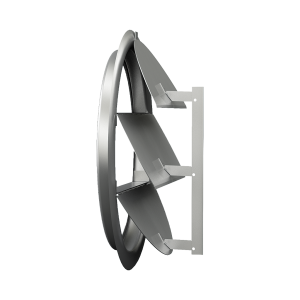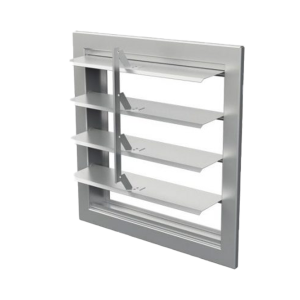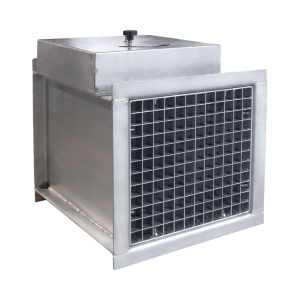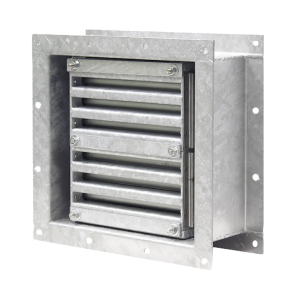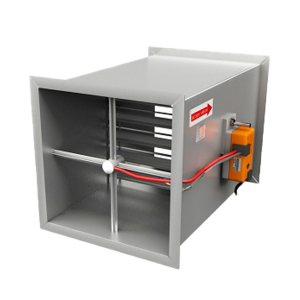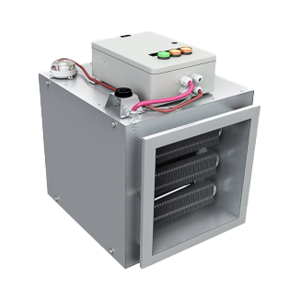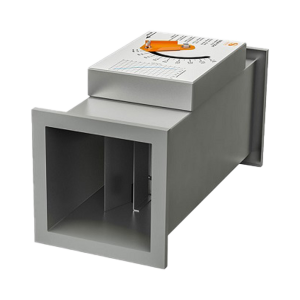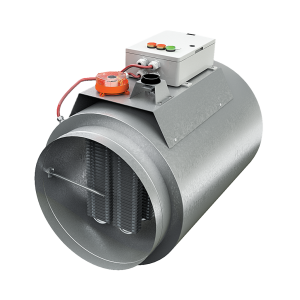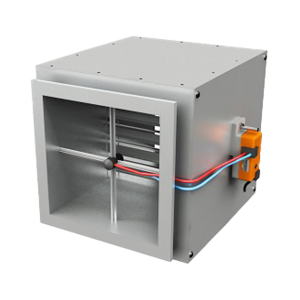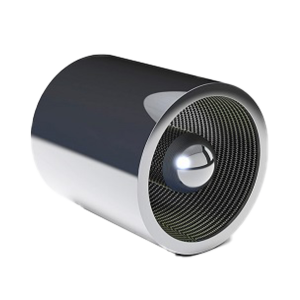
3D
Balance damper is one of the category of weight dampers produced by Shahrokhi Technical Institute. The following are the features of this air damper
Damper balance with a weight or gravity mechanism whose blades make the air flow in one direction in the desired direction and prevent the air from returning. This type of damper is used in spaces such as diesel generator rooms, exhaust fan outlet and radiator outlet. If heavier materials such as galvanized iron with higher thickness are used instead of aluminum, the weight of the vanes will increase accordingly and the pressure required behind the damper to open the vanes will be greater. As a result, by weighing the vanes, it is possible to determine at what pressure the vanes will open. With this mechanism, positive pressure can be created in the space behind the damper. It is possible to install a net behind the balance of the dampers.
Dimensional restrictions: minimum: 15 x 15 cm – maximum 250 x 1.25 cm (in dimensions larger than the above dimensions, the frame is one piece and the blades are made into several pieces for greater strength.)
Material limitations: There are galvanized iron, aluminum, carbon steel and steel constructions.
Installation conditions: When ordering this type of damper, the installation location of the damper (internal wall or external wall) as well as the direction of air flow (from the inside of the space to the outside or from the outside of the space to the inside) must be determined. Usually, to install the balance of the dampers, a frame is placed on the opening and close to the edge of the damper balance with a weight or gravity mechanism that has its vanes, which causes the air path to be one-way in the desired direction and prevents the return of air. This type of damper is used in spaces such as diesel generator rooms, exhaust fan outlet and radiator outlet. If heavier materials such as galvanized iron with higher thickness are used instead of aluminum, the weight of the vanes will increase accordingly and the pressure required behind the damper to open the vanes will be greater. As a result, by weighing the vanes, it is possible to determine at what pressure the vanes will open. With this mechanism, positive pressure can be created in the space behind the damper. It is possible to install a net behind the balance of the dampers.
Dimension restrictions: minimum 15 x 15 cm, maximum 1.25 x 250 cm (in dimensions larger than the above dimensions, the frame is one piece and the blades are made into several pieces for greater strength.)
Material limitations: There are galvanized iron, aluminum, carbon steel and steel constructions.
Installation conditions: When ordering this type of damper, the installation location of the damper (internal wall or external wall) as well as the direction of air flow (from the inside of the space to the outside or from the outside of the space to the inside) must be determined. Usually, to install the damper balance, a frame is considered on the opening and close to the edge on which the damper balance will be installed, and the damper balance is fixed on the frame with a threaded screw or bolt.
Testing ability: It is possible to measure the amount of leakage based on D500 and AMCA 511-10 standards in the laboratory of Shahrokhi Technical Institute. It is also possible to measure the pressure drop applied in the ducting system by this type of damper and to measure the air flow rate in this type of damper based on the national standards ISIRI 7693 and ISIRI 7695 and the international standards ISO5219 and ISO5221 in the laboratory of Shahrokhi Technical Institute. has it.
Final coating: degreasing is possible through washing in a bath of soap and water for the frame and blade of this type of damper. It is also possible to paint according to the customer’s instructions. Epoxy, polyurethane and powder colors are applicable for this type of damper. Due to the fact that painting may interfere with the functioning of the balance damper, painting is not recommended for this type of product.
The damper balance will be installed on it, and the damper balance is fixed on the frame with a threaded screw or bolt.
Testing ability: It is possible to measure the amount of leakage based on D500 and AMCA 511-10 standards in the laboratory of Shahrokhi Technical Institute. It is also possible to measure the pressure drop applied in the ducting system by this type of damper and measure the flow rate of the passing air in this type of damper based on the national standards ISIRI 7693 and ISIRI 7695 and the international standards ISO5219 and ISO5221 in the laboratory of Shahrokhi Technical Institute. has it.
Final coating: degreasing is possible through washing in a bath of soap and water for the frame and blade of this type of damper. It is also possible to paint according to the customer’s instructions. Epoxy, polyurethane and powder colors are applicable for this type of damper. Due to the fact that painting may interfere with the functioning of the balance damper, painting is not recommended for this type of product.
